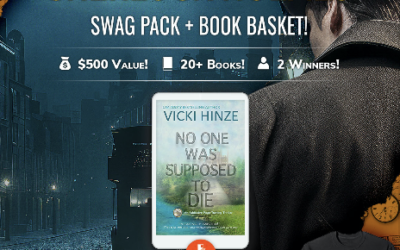Vicki Hinze © 2003-2011
Villains are tricky rascals. As an author your job requires you walk a fine line. You must make your villains credible, logical, believable and understandable, but not likable. You want your villains to be real, three-dimensional people. You want the reader to understand what they’re doing, why they’re doing it, why they believe their actions are just and rational
As I said, this requires the author to walk a fine line, and all too often we fall to using stereotype, cardboard “bad” guys who have no redeeming qualities. This makes them one-dimensional, lowers their emotional impact, and it also lowers the reader’s esteem for the hero and or heroine who will eventually best this villain.
The reason is that a totally evil villain is less a threat, less evil, less frightening than one who is strong. Totally evil equates to totally weak, because there are only surface motivators driving the villain. But if you build the villain’s character by giving him logical
To be most effective, a villain does the wrong things, but in his mind, he’s doing the right things for the right reasons. Remember, no one sees him- or herself as a bad person, nor as a foolish one—not even a villain. To him, his actions are just. His reasons are valid
In his eyes, he is intelligent. He is a worthy adversary to the hero and heroine, capable of inflicting the evil he chooses, capable of winning the battle against the hero and heroine. Now, if you, the author, depict him this way to the readers–both from his own POV and from others’–because the villain is intelligent, a worthy adversary, capable of inflicting this evil, and capable of winning the battle, the outcome of who will win is uncertain. That uncertainty creates suspense. And when a character who is not fighting twisted logic and faulty perception, recognizes how twisted the villain is, how dangerous those qualities make him, that doubles suspense. These elements combine and make for a good, exciting, edge-of-your-chair, page-turning read.
When you create your villains, ask yourself this question: How hard is it for a hero/heroine to battle and best a wimp? The stronger your villain, the stronger your hero/heroine. Besting a wimp isn’t much of a victory. But a worthy adversary, well, that says a great deal about your hero and heroine, doesn’t it?
If your villain is smart, sharp, and darn good at what he’s doing, then to best him, your heroine/hero must be smarter, sharper, and better than darn good at what they’re doing. When they best the villain, they’ve accomplished something worthy. And, you the writer, rather than lowering the value of your hero and heroine, have upped everyone’s value and strength, which means these elevated characters are capable of carrying the weight of a much more intensive story. You’ve also increased your authorial options. Your characters, being capable of more, are able to give more to the story. Your plot isn’t bound by the limitations of its’ characters but freed by their abilities.
So, as Robert Newton Peck says, “Give your Black Bart a daisy.” Or give your villain redeeming qualities. Make him good. Make him darn good. Because that makes the heroine and hero better and permits you to make the story stronger.*




